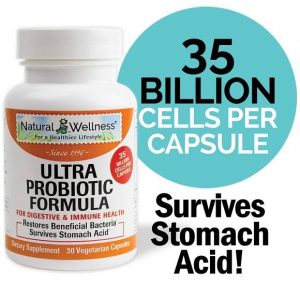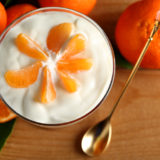

We’ve talked about probiotics before in a general sense. They’re those living microorganisms that grow in certain fermented foods, offering us a host of health benefits.
They bolster healthy gut bacteria, promote immunity, digestion, can help with weight management, and even obesity (1).
They’re usually created through a fermentation process involving yeast or lactic acid and are commonly found in foods like:
- Yogurt
- Cheese
- Kimchi
- Sauerkraut
- Sourdough bread
Old news, right?
But perhaps what you didn’t know was just how popular probiotics are about to get. According to Zion Market Research the “global probiotics market was valued at approximately 40.09 billion in 2017 and is expected to generate revenue of around 65.87 billion by end of 2024.” That’s huge growth, and a good indication of the collective faith in probiotics.
So as probiotics become a mainstay, we want to understand how they can benefit not just us, but our loved ones as well.
Let’s demystify probiotics by personalizing them and filtering our discussion through the lens of family. In doing so we aim to discover the best probiotics for ourselves, but also the best probiotics for kids, the best infant probiotics, the best probiotics for men versus those for women, the best probiotics for the elderly, and even the best probiotics for our household pets.
Probiotics for Babies and Infants
One of the most common types of probiotics is the lactobacillus species, and it’s one of the most regularly used baby probiotics in clinical trials. Lactobacillus species are found in yogurt, and in a study published by JAMA online, researchers gave newborn babies a daily oral supplement of the probiotic lactobacillus reuteri and observed that it “lessened the inconsolable crying of colic and reduced the incidence of regurgitation and functional constipation in the first 3 months of life.” That’s a positive outcome to any parent who’s ever wrestled with colic or a baby’s digestive discomfort.
Other research shows that treating babies with the trifecta of bifidobacterium bifidum, bifidobacterium lactis, and lactococcus lactis can effectively prevent eczema later on in life.
When thinking about introducing a probiotic to your infant or baby diet, always check with your doctor first and be sure to follow labeling instructions on any product containing probiotics.
After that, one of the easiest and tasty ways to feed your baby probiotics is through yogurt. Here is a helpful graph courtesy of the American Academy of Pediatrics letting us know the CFU* count per dose in a variety of different recognizable products. In general, 1-5 billion CFUs per day should be safe and manageable.
* The dosage of probiotics is measured in colony forming units, or CFUs, and ranges from hundreds of millions of CFUs per dose to tens of billions of CFUs per dose.
Probiotics for Kids
Once they’re out of the crib, The American Academy of Pediatrics recommends 5-10 billion CFUs per day for children.
Due to how quickly the field of probiotics is expanding, some clinicians are finding it difficult to keep up, which is why Pediatric Gastroenterology, Hepatology & Nutrition compiled an article that summarized all available evidence of probiotic use in children and found that lactobacillus rhamnosus and saccharomyces boulardii had “proven effect in the treatment of acute gastroenteritis (stomach flu) and prevention of antibiotic associated diarrhea.”
Rhamnosus and saccharomyces boulardii play key roles in cheese ripening and should not be too difficult to feed to most children. They were even shown to play a role in cavity reduction in children in some clinical research, a helpful tip for any parent wrestling with the sweet tooth of a child.
Beyond stomach flu, if you or anyone you know suffers from irritable bowel syndrome (IBS), you may be pleased to know that the probiotic bifidobacterium bifidum (MIMBb75) can effectively manage the symptoms of IBS and improve one’s quality of life (5). But successful management preferably starts at a very early age and can lead to preventing IBS and other intestinal tract issues later on in life.
A fun way to integrate probiotics into your kids’ diets is with smoothies. We recommend probiotic supplements, or powders blended with ice along with other healthy probiotic foods like bananas and strawberries. The probiotics and the produce are easy to find, inexpensive, easy to prepare, and serve as a refreshing and sweet take on probiotics (and most kids will never know the difference).
The Best Probiotics for Women & Men
Generally, higher doses have been found to produce the best results in most studies. Taking extremely high doses hasn’t been found to cause harm either. One study gave participants up to 1.8 trillion probiotics per day without causing damage or severe side effects.
Women
- Most adult women can safely consume around 10 billion CFUs per day.
- As far as probiotics particularly helpful to women, two different types of lactobacillus – rhamnosus and reuteri – are the most effective for preventing and managing urinary tract infections (UTIs). Other probiotics such as casei shirota and crispatus, the later being commonly found in squacquerone cheese, show high efficacy in studies by preventing gynecological infections.
- Lactobacillus rhamnosus and lactobacillus fermentum have also been shown to improve vaginal flora and help prevent against vaginal yeast infections.
- Unsurprisingly, another strain of lactobacillus called plantarum has been found to prevent the growth of E-coli and boost fertility in women.
- With women more than twice as likely to develop multiple sclerosis, it’s helpful to know that in one human study lactobacillus reuteri was shown to improve symptoms and quality of life in multiple sclerosis patients and can be found in most sourdough breads.
Men
- Most men can consider consuming between 10-20 billion CFUs per day.
- Two of the best probiotics for men are lactobacillus rhamnosus and bifidobacterium, both having shown to improve sperm mobility, thus increasing fertility. You can bolster your gut’s bifidobacterium by eating polyphenols from foods such as cocoa, green tea, and fermented foods like red wine and kimchi.
The Elderly
Probiotics can benefit the elderly members of your household in a number of ways.
The elderly are often at high high-risk of immune dysregulation and autoimmune diseases such as rheumatoid arthritis (11). In the lab, lactobacillus casei supplementation “reduced tender and swollen joint counts, and improved global health (GH) score in study participants.” Casei is most commonly found in raw milk and long-fermented cheeses (11).
In addition to helping all sorts of digestive issues like IBS, probiotics for the elderly may also be helpful in keeping healthy bone density, preventing or managing fatty liver disease, inflammatory bowel disease (IBD), cardiovascular disease (CVD), diabetes and other diseases that tend to occur later on in life (11).
Our Furry Friends
While probiotics for the human family members are usually the first priority, a close second are probiotics for dogs and cats.

One of the more helpful uses of probiotics may be when boarding your animals or leaving home for any extended period of time. These events can cause stress and anxiety-induced intestinal disorders in pets that probiotics can help manage. Trust us, whoever is taking care of your pets while you’re away will thank you!
Probiotics may also be helpful for your pets if they ever get into the garbage or find food that they shouldn’t eat. Eating food outside of their normal diet can throw off the balance of an animal’s microbiota, and probiotics can help restore that balance.
Another pitfall of pet ownership comes when pets get sick and stay on an antibiotic or steroids for an extended period of time, potentially affecting their gut bacteria for the worse. According to Dogs Naturally Magazine “fermented foods mimic the gut contents of prey. They’re already predigested and the fermenting process multiplies the good bacteria and enzymes that are natural.”
It should also be noted that probiotics need prebiotics in animals. Prebiotics are insoluble fibers that feed the good bacteria in the colon.
The following prebiotic foods can be safely added to your dog’s diet:
- Bananas
- Green leafy veggies
- Apples
- Mushrooms
Conclusion
Old or young, male or female, one of the best ways to get your probiotics no matter who you are is through your food. The amount of CFUs in most yogurts, cheeses and fermented products ranges from 5-10 billion CFUs. Always check labels and follow instructions.
However, if you feel that is not enough or you won’t be eating foods with probiotics daily, supplementing is your answer.
Thirty-five billion living cells per capsule makes Natural Wellness’s Ultra Probiotic Formula a very powerful, high-potency formula developed to withstand acids in the stomach, to quickly restore healthy levels of beneficial bacteria in the stomach and intestines, and to not require refrigeration. Learn more.
As The Mayo Clinic puts it, “there are a greater number of bacteria in your intestines than there are cells in your body.” That being said, the wealth of probiotic information out there may feel daunting, but filtering everything through the lens of family and loved ones is a practical approach, whether you’re experienced with probiotics or are a first time user.






